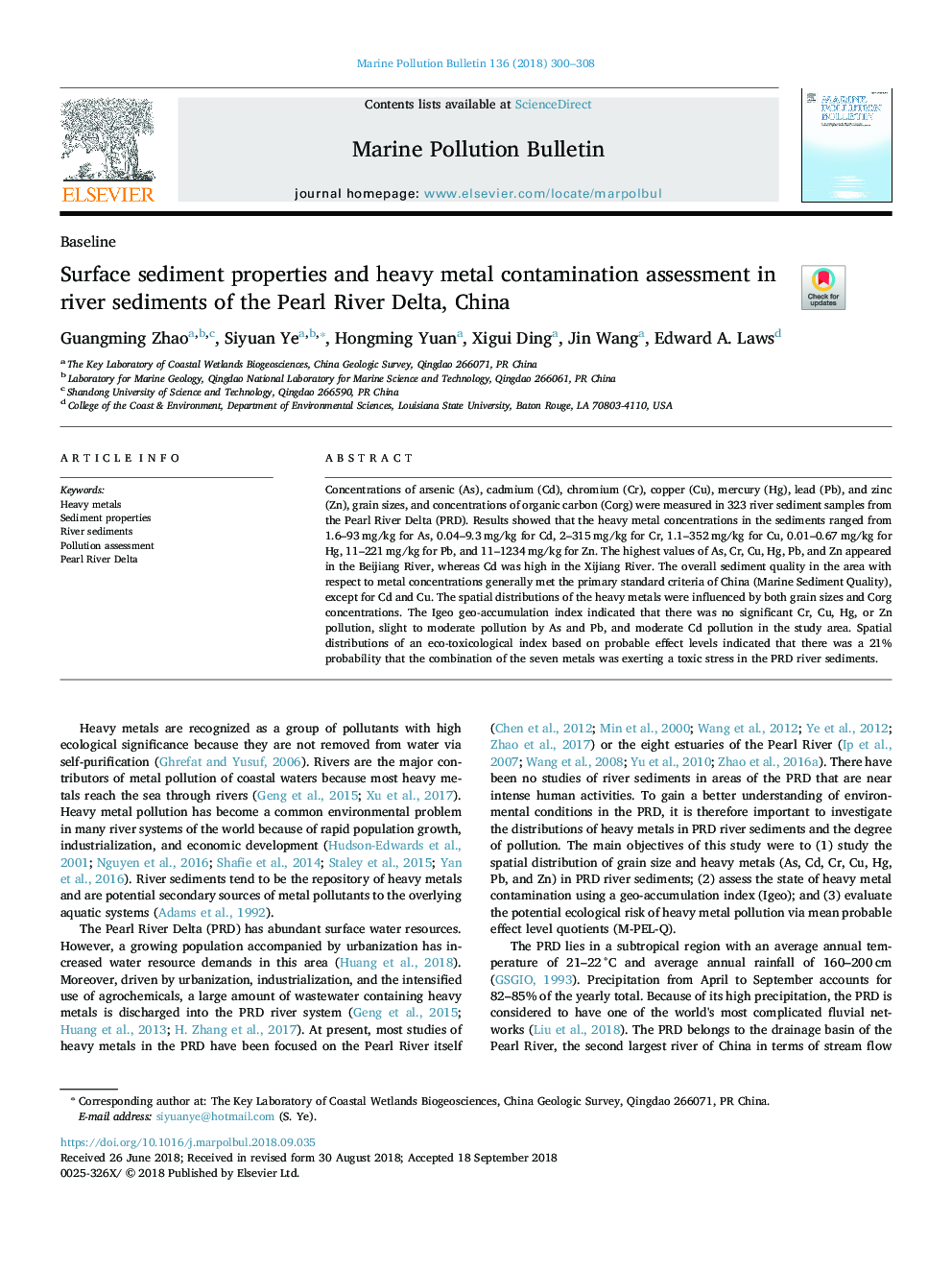| Article ID | Journal | Published Year | Pages | File Type |
|---|---|---|---|---|
| 11028639 | Marine Pollution Bulletin | 2018 | 9 Pages |
Abstract
Concentrations of arsenic (As), cadmium (Cd), chromium (Cr), copper (Cu), mercury (Hg), lead (Pb), and zinc (Zn), grain sizes, and concentrations of organic carbon (Corg) were measured in 323 river sediment samples from the Pearl River Delta (PRD). Results showed that the heavy metal concentrations in the sediments ranged from 1.6-93â¯mg/kg for As, 0.04-9.3â¯mg/kg for Cd, 2-315â¯mg/kg for Cr, 1.1-352â¯mg/kg for Cu, 0.01-0.67â¯mg/kg for Hg, 11-221â¯mg/kg for Pb, and 11-1234â¯mg/kg for Zn. The highest values of As, Cr, Cu, Hg, Pb, and Zn appeared in the Beijiang River, whereas Cd was high in the Xijiang River. The overall sediment quality in the area with respect to metal concentrations generally met the primary standard criteria of China (Marine Sediment Quality), except for Cd and Cu. The spatial distributions of the heavy metals were influenced by both grain sizes and Corg concentrations. The Igeo geo-accumulation index indicated that there was no significant Cr, Cu, Hg, or Zn pollution, slight to moderate pollution by As and Pb, and moderate Cd pollution in the study area. Spatial distributions of an eco-toxicological index based on probable effect levels indicated that there was a 21% probability that the combination of the seven metals was exerting a toxic stress in the PRD river sediments.
Related Topics
Physical Sciences and Engineering
Earth and Planetary Sciences
Oceanography
Authors
Guangming Zhao, Siyuan Ye, Hongming Yuan, Xigui Ding, Jin Wang, Edward A. Laws,
